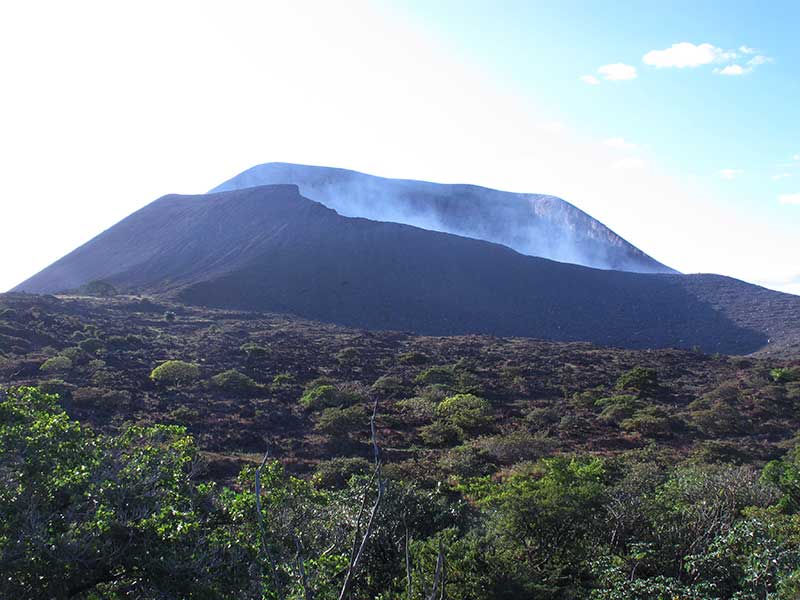Telica Volcano - Nicaragua

At 1,060 metres above sea level, the Telica volcano is located in the department of León, Nicaragua. It is located in the Cordillera de los Maribios mountain range and is still active. The last eruption occurred in 2018, when it released a 500-metre plume of smoke, rock fragments, sandy material and gases.
You may be interested in: Top 12 treks in Central America "
Practical guide for hikers
The best place to stay before starting the route is León. From there you can take a bus to San Jacinto, the place where the route to the summit begins. The journey to the town is about 10 km.
It is possible to do the tour individually or by hiring the service of a guide. If you ask the people in charge of the crops in the area, you can reach the summit without much difficulty. If you do the route with a guide, he or she will show you some places of interest along the way, as well as providing information about the fauna and flora of the area. It takes about 5 and a half hours to complete the whole route.
At the summit you can see a smoking crater mouth about 700 m wide and 120 m deep. If you look inside the crater you can see bright red magma and clouds of sulphur gas.
It is possible to camp just a few metres from the crater, the ideal place to spend the night.
The route can be done at any time of the year as temperatures do not vary practically all year round.
READ ALSO: Eight volcano ascents around the world that you can't miss "
Advice for hikers
As this is a high altitude mountain, warm clothing will be necessary. During the hike the temperatures will drop as the altitude increases. If the route is to be done at night, the clothing should be very warm. If the route is done during the day, the clothes could be lighter but warm clothes will be necessary for the summit. It is essential for everyone to wear comfortable, sturdy walking shoes.
With regard to food and drink, it is important to calculate the rations that will be necessary. Those who have done the route on a single day should carry at least 2 litres of water. Those who decide to camp and descend the following day will need to drink to go up, spend the night and descend the following morning, so at least 4 litres will be necessary. In the case of food, people doing the route during the day will need to bring some sandwiches to eat. People doing the route over two days will require more food.
Although there are no major problems in following the path, it is recommended to use a GPS device to avoid any risk. This way, in the event of an injury or any kind of problem, the rescue services will be able to act very quickly. Although in the case of people who are not experienced in hiking routes, it would be a better idea to hire a guide.
It is important to plan the trip in advance as weather conditions will make the route easier or more difficult. In order to be able to climb to the summit it will be important to take into account whether there is rain or not and the wind. However, there may be some parts of the trail where it is not always clear which route to follow.
The locals only speak Spanish, so a basic knowledge of the language is recommended. It is also quite difficult to find a local to ask for directions to the trail.
Those who are not experienced hikers or do not have a very good orientation should hire a local guide in San Jaciento in order to climb to the top. Those who decide to do it individually will have to prepare the route with an extra hour or two in case they get lost in order to be able to retrace their steps.
It is recommended to do the route at night, so you can have a unique view of the volcano. The red colours of the magma are even more impressive when the surroundings are completely dark.
Fastpacking is not about going faster. It's about going lighter.
If you come from classic trekking, this is the next step: learning to move with less weight,
more fluid and enjoying every kilometre more.
Join the channel and start discovering what lightness feels like.
